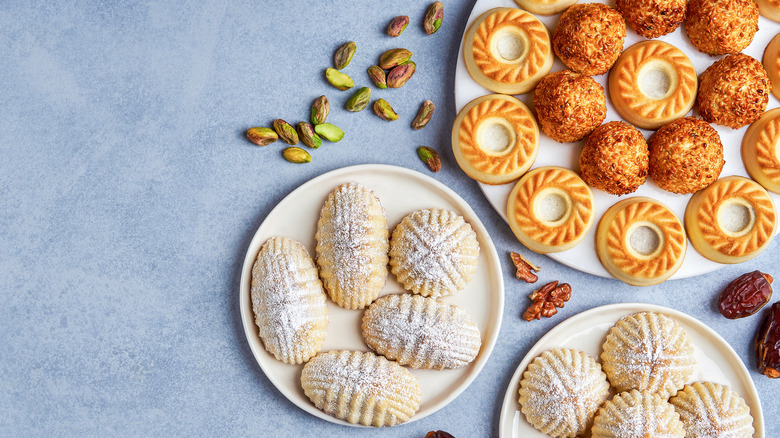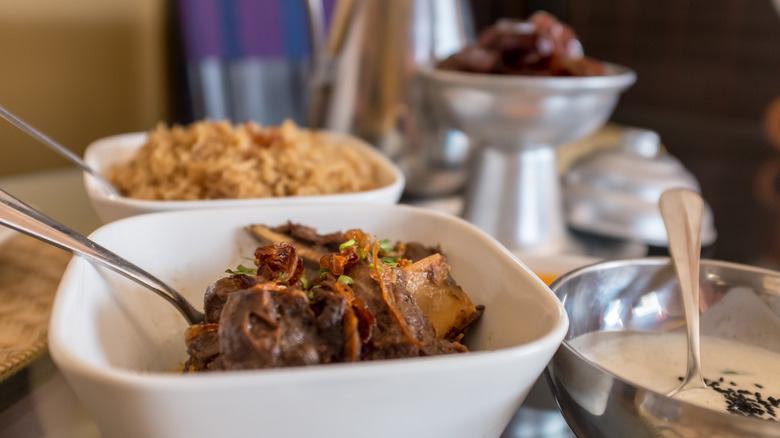The Real Difference Between "Sweet" Eid And "Salty" Eid
Many non-Muslims, if they are aware of Eid at all, think of it as a holiday marking the end of Ramadan. Well, this is 50 percent true. In fact, Islam has two Eids. The Ramadan-ending one is called Eid Al-Fitr, which translates to mean "festival of the breaking of the fast." As Cleveland.com describes it, Eid Al-Fitr is known as a "sweet" holiday, and of course, it's all about the food!
Okay, so every holiday is all about the food, but after a whole month dedicated to daylight fasting, food plays an even bigger role during Eid Al-Fitr. Traditionally it is sweets that take precedence, particularly during that fast-breaking breakfast eaten after morning prayers at the mosque. While some modern Muslims may opt for filling up on pancakes at IHOP, those with the time and inclination to bake or access to a market offering Middle Eastern delicacies may indulge in more traditional treats.
One such goodie is maamoul, an Arabic word for "splendid" which aptly describes the date-filled cookies to which it also refers (via Cleveland.com). In South Asia, the dessert of choice may be sheer khurma, a rice pudding-like concoction made with vermicelli and delicately flavored with cardamom and rose or orange blossom water. While desserts aren't the only thing on the menu during the three-day Eid Al-Fitr celebration, even traditional main dishes such as lamb shanks with pomegranate and saffron tend to include a little sweetness.
Eid al-Adha favors savory dishes
According to the Boston Public Library, Eid al-Adha is actually considered to be the more important of the two Eids. Its name means "festival of the sacrifice" and it commemorates the occasion on which the prophet Ibrahim, aka the biblical Abraham, was willing to sacrifice his son Isaac in order to please Allah (or God, in the Christian version of the same story). As Allah provided a last-minute reprieve in the form of a lamb to be sacrificed instead, this feast is celebrated by eating lots and lots of meat. Lamb, of course, is the meat of choice, and it can be served up stewed, roasted, or barbecued. In Morocco it might be made into a tagine, perhaps with plums, while in Oman lamb shuwa may be on the table — Oman Daily Observer calls this spiced, roasted lamb shank "the king of comfort food."
Though Eid al-Adha may be meat-centric, it also has its sweeter side. Maamoul make their appearance at this time as well as other traditional holiday desserts, like orange and semolina coconut cake and the sweet cheese and nut-stuffed pastries called qatayef (via Boston Public Library). There's also room for innovation when it comes to festival foods, with one Abu Dhabi-based baker telling The Media Line that his special Eid al-Adha-themed cupcakes are hot sellers during the holiday.

